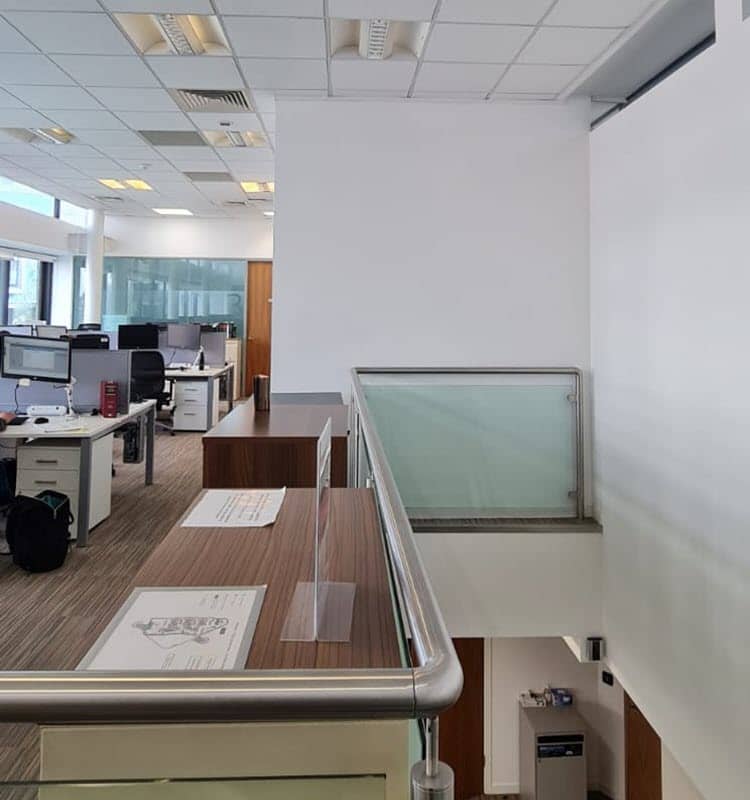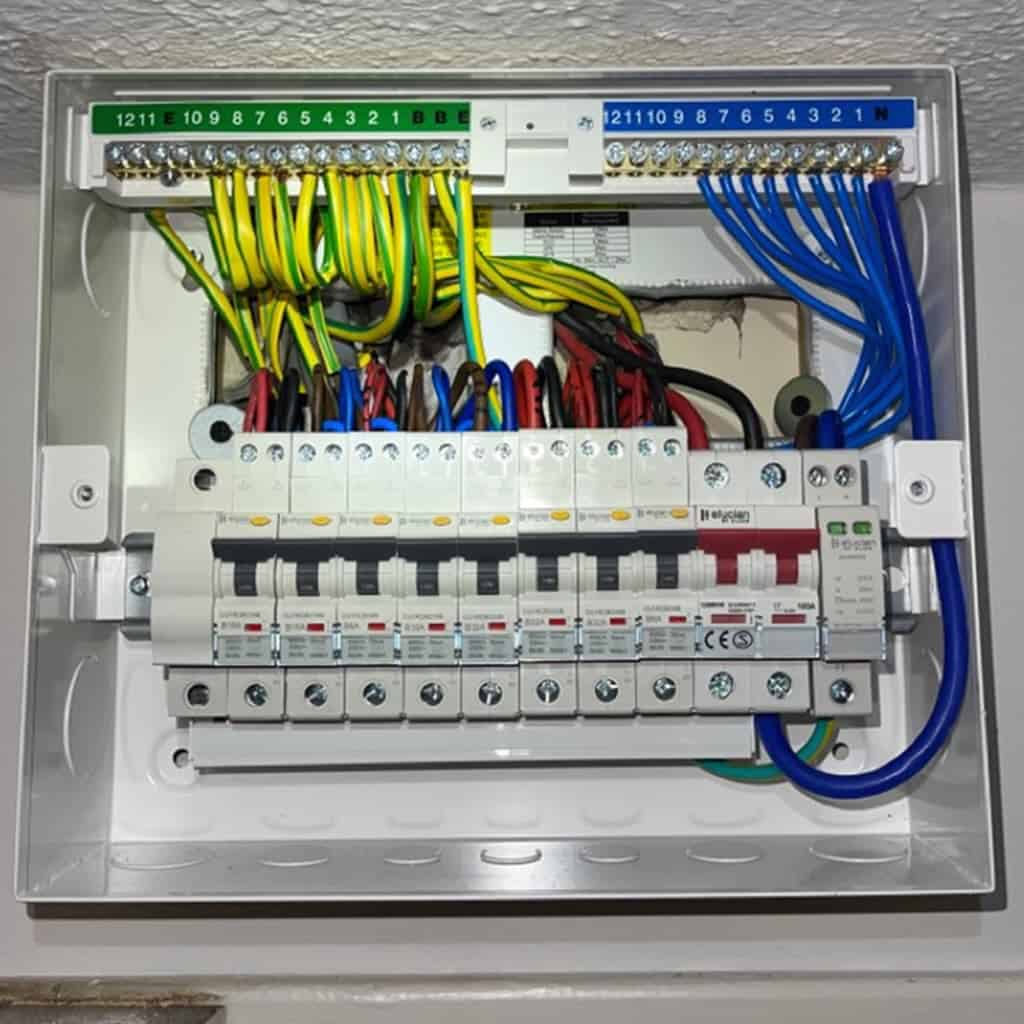Electrical Installation Condition Reports (EICR) assess the safety and condition of electrical systems in a property. EICRs help ensure compliance with the required electrical standards and any further investigation (FI) codes in the EICR indicate the need for additional examination to confirm the safety and integrity of the system.
This page forms part of our guide to EICR fault codes and follows on from the recent pages on C1 codes, C2 codes and C3 codes.
What is an FI code in an EICR?
An FI code in an EICR signifies that an electrical issue has been identified which requires further investigation to determine if it poses a risk. This code does not immediately indicate a risk but suggests that additional information or testing is needed to clarify the safety of the installation.
Meaning and definition
A FI code in an EICR means that a potential concern has been found but it cannot be fully assessed during the initial inspection. Basically the inspector was unable to determine the full extent of a possible issue and recommends a more detailed examination to ensure safety.
One common issue that occurs is when a high resistance reading is found on a circuit. Although the circuit may function normally, replacing the consumer unit and adding an RCD would prevent the circuit from being energised due to the high resistance.
Why conducting further investigations is crucial – without further investigation, there might be underlying issues that could pose risks if left unresolved. Completing additional tests ensures that any hidden problems are identified and rectified promptly.
Does an FI code make an EICR unsatisfactory?
Yes, a FI code EICR will render the EICR unsatisfactory. This is because the safety of the installation cannot be fully assured without completing the recommended further investigations. All FI codes must be resolved to achieve a satisfactory rating.
Examples of FI (Further Investigation) codes in an EICR
In the photo below you can see that due to access restrictions we were unable to test the light fitting located above a staircase. On return we had the correct access equipment to test this light fitting.

Uncertain condition of hidden cables:
If the electrician is unable to verify the condition of cables concealed behind walls or ceilings, an FI (Further Investigation) code may be issued.
This fault code requires additional investigation to uncover and address any potential hidden faults, ensuring the safety and integrity of the electrical system.
Inaccessible areas:
When specific parts of the installation are inaccessible during the inspection, such as areas behind built-in furniture or within locked rooms, an FI (Further Investigation) fault code may be required.
This code is essential to ensure a complete assessment of these otherwise unreachable regions.
Unidentifiable components:
If the electrician finds components or wiring configurations that cannot be identified or verified, it is strongly recommended to conduct further investigation.
This is necessary to understand the purpose of these elements and to ensure they meet safety standards and to uncover any live wiring in walls or under floors.
High resistance on wiring or consumer unit:
If high resistance is detected on a circuit’s cables during an EICR, an FI code is warranted. High resistance can indicate poor connections, damaged conductors, or other issues that may not be immediately visible.
Further investigation is required to pinpoint the cause of the high resistance, which could involve detailed testing and inspection of the cable runs and connections to ensure they are not posing a hidden risk to the installation’s safety.
Unknown Circuits:
During an Electrical Installation Condition Report (EICR), if our electricians discover circuits that are not properly labeled or identifiable, an FI (Further Investigation) code is issued.
This indicates that the purpose and connections of these circuits need to be determined to ensure they are safe and comply with standards. The investigation may involve tracing the circuits to their origin and endpoints to identify their function and confirm they are correctly installed and safe to use.
If we are unable to find these circuits within 2 hours we usually disconnect them from the consumer unit.
Insufficient Earthing Investigation
If our electrician identifies instances of insufficient earthing or bonding, an FI (Further Investigation) code for insufficient earthing investigation is issued.
This code necessitates a detailed inspection to evaluate the effectiveness of the earthing system. Correct earthing is essential for the safe operation of electrical installations, as it protects against electric shocks and prevents electrical fires.
Common FI faults on a EICR
In the picture below, a new consumer unit has been installed by another electrician but two of the circuits are not labeled, and their corresponding RCBOs do not affect anything within the property when turned off. This suggests that these circuits may not be in use but could still be live, posing a potential hazard within walls, ceilings, or under floors.
The FI is to investigate these circuits to locate and disconnect them if they are indeed inactive.

The benefits of resolving FI codes
Addressing FI EICR codes offers significant peace of mind by ensuring that all potential risks within the electrical system are identified and rectified.
This approach will increase safety, prevents future hazards, and ensures compliance with the wiring regulations. Additionally, resolving these issues can improve the overall reliability and performance of the electrical installation, providing confidence in the safety and integrity of your property.
Legal obligations for landlords regarding FI codes
For landlords, ensuring all FI codes are investigated and resolved is crucial for legal compliance and tenant safety. An unsatisfactory EICR can result in penalties and restrict the property from being rented out until all issues are resolved.
Conclusion
FI codes in an EICR signify that an electrical issue has been identified which requires further investigation to determine if it poses a risk to the safety of the electrical installation.
If you have any questions, or have had a test conducted by another company and would like our professional opinion, please feel free to contact us.
See our EICR services for more information on how we can help you maintain a safe electrical environment – or give us a call on 0131 258 2750.
We hope you’ve found this article helpful.
All the best
Mark and the IES team.

